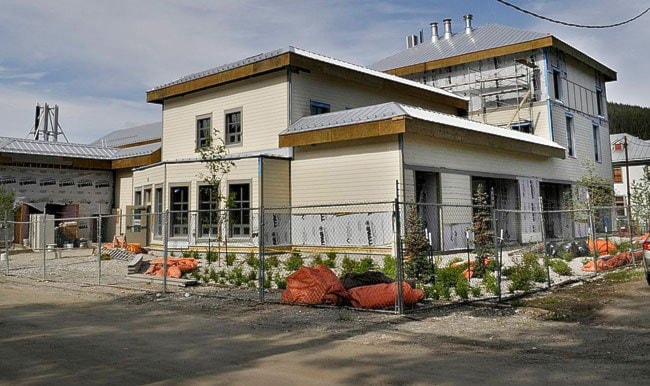The Yukon government spent $54.8 million on two new hospitals that it didn’t need.
On Thursday, the government released a health-care needs assessment report for Watson Lake and Dawson City, which the Yukon Hospital Corporation neglected to order before deciding to build new hospitals in each community.
That report makes it clear that what the two communities need are increased addictions services, better access to mental health care and a focus on collaborative care, not new acute-care hospitals.
In Watson Lake in particular, the report says that “an increase in community-oriented services seems more urgent than increased hospital services,” and “despite the major toll (of addictions) on health and social services, the new facilities were not designed or contemplated as integral parts of addressing the need.”
The need for holistic addictions treatment in Watson Lake is so dire that “not addressing alcohol and substance abuse, including prescription medicine, would render meaningless all other efforts to address need.”
“Further, the needed care did not appear to be a priority in the functional programming of the new facilities,” the report said.
Health Minister Doug Graham would not speak to the News about the report, although he did make himself available to speak about his government’s donation to the food bank.
Cabinet spokeswoman Elaine Schiman said he was too busy, and she would attempt to have Graham call back later in the afternoon. He did not return the call by press time.
Yukon Hospital Corporation CEO Jason Bilsky also did not return a call for comment by press time.
Graham did issue a press release earlier this week, praising the report.
“We don’t have to follow traditions and we now have the opportunity to do something different, to care for our citizens in a more integrated, collaborative model,” he said.
Late Thursday evening, Schiman sent an email saying that Graham would not be available for a full interview on the report because he had only received a final copy of it a week ago and needed more time to study it. The version tabled on Thursday in the legislature is dated Oct. 23, 2013.
Schiman did not offer any clarification by press time as to why it took so long for the minister to get a copy, or why he would issue a news release about a report he was not comfortable taking questions on.
The report also called for detox services to be set up at both new hospitals, including a professionally-staffed detox bed in each centre with three trained nursing staff and one resident professional to provide aftercare and addiction prevention services in the communities.
As well, the report highlighted the importance of better palliative and end-of-life care in both communities, and calls for a dedicated methadone clinic in Whitehorse to be the basis for a territory-wide approach to substance abuse treatment, which is currently missing.
In February, Canada’s auditor general slammed the Yukon government and the hospital corp. for poor planning and mismanagement of the hospital projects.
The biggest criticism was that the projects were undertaken without first doing a needs assessment to see what services the communities would most benefit from.
“Before entering into a project such as this, you really need to make sure that this is what you need, and that this is the best way of meeting those needs. It’s quite clear that this was a political decision,” Assistant Auditor General Ronnie Campbell said at the time.
By the time the two projects were finished this fall, they were a year behind schedule and a combined $8 million over budget.
In the wake of the auditor general’s report, the government promised to do the belated needs assessment, to make sure that the new facilities are put to the best possible use.
The needs assessment report opens with a letter to Bilsky and Paddy Meade, who co-chair the hospital project steering committee.
“It should be stressed that this study assesses needs and is not a study of supply nor a forward-looking clinical services plan,” the letter reads.
Dawson City’s emergency department use is expected to grow by 13 per cent over the next five years, and 26 per cent over the next 10 years. Watson Lake’s emergency room needs are expected to increase by 17 per cent in the next decade, the report said.
Contact Jesse Winter at
jessew@yukon-news.com
